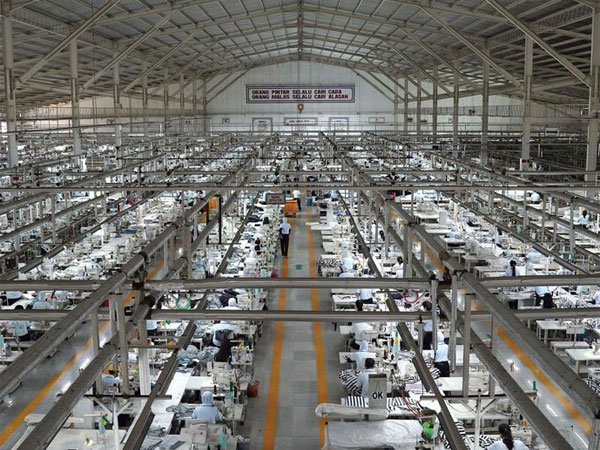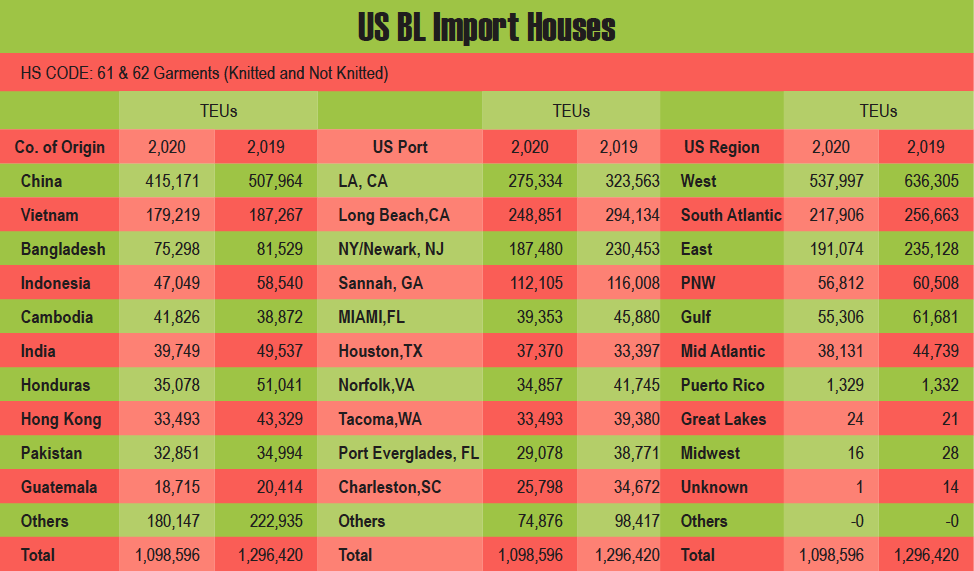What will the apparel industry look like post-pandemic?
The apparel and footwear industry is undergoing some profound changes as the pandemic’s grip loosens, what will the industry look like?

It is with this backdrop that Stephen Lamar, chief executive officer of the American Apparel and Footwear Association (AAFA) asked that the tariffs be removed quickly, explaining in an interview with Seana Smith of Yahoo Finance, “Look, during a pandemic is the worst time to be charging tariffs. It’s a cost. It means that we’re paying these taxes to the US government, that prices get inflated. It denies us the ability to hire more workers to pass along those savings to consumers. This is the wrong time to be adding tariffs. So, we’re hoping they’ll be able to turn their attention to that as quickly as they possibly can.”
Lamar (and the AAFA) has many reasons to want the tariffs to drop but the bottom line is that the apparel and footwear industry has been taking a beating and have either closed shops or gone outright into bankruptcy like legacy department stores and outlets including Century 21, Lord & Taylor, Neiman Marcus, the Gap, Brooks Brothers, JC Penney, Abercrombie & Fitch, Francesca’s and Macys.
To be sure, tariffs weren’t the sole cause. The pandemic’s lockdowns accelerated a move to e-commerce that devastated brick and mortar business. But for an industry based largely on imported goods, the double whammy of tariffs and lockdowns has altered the business landscape.
The question Lamar and others have in the post-pandemic reality is will the apparel and footwear industry rebound, and in what fashion?
Stimulating a Recovery
For now, Lamar got his wish. On March 11th, President Joe Biden signed the $1.9 trillion COVID-19 relief bill into law a few days after temporarily extending tariff exclusions. And as Lamar in his statement said, “This relief comes just days after the decision to temporarily extend tariff exclusions for imports of crucial Personal Protective Equipment (PPE) and to temporarily lift other punitive tariffs which have been undue taxes on American businesses and consumers.”
But Lamar also pointed out, “Beyond stimulus, it is important we quickly pass legislation to build a backstop for trade credit insurance and create limited liability protections, both of which are needed to sustain our recovery.”
Exactly what that recovery will look like for the apparel and footwear sector is still uncertain. The economic recovery from other retail sectors is already well underway with certain caveats. The National Retail Federation (NRF) reported in March that February numbers in a year-over-year basis (Commerce Dept. figures) were up 6.3%, despite a minor slowdown in February.
NRF Chief Economist Jack Kleinhenz said, “Despite that, it’s hard to see this as a setback when you consider how large the year-over-year gains are and that sales are well above pre-pandemic levels. February had winter storms that impacted consumers’ ability to get out and shop, and the IRS’ delay in when it started accepting tax returns pushed back the release of refunds. But increased vaccinations and reductions in restrictions allowed more people to venture out and government stimulus gave them more money to spend.”
Overall, the NRF is forecasting that 2021 retail sales will increase between 6.5% and 8.2% percent over 2020, for a total between $4.33 trillion and $4.4 trillion.
However, the kicker in all the stimulating good news is that clothing and clothing accessories haven’t been keeping pace with other retail sectors. According to the NRF, “Clothing and clothing accessory stores were down 2.8% month-over-month seasonally adjusted and down 14.9% unadjusted year-over-year.” While clothing retailers are hoping that as the pandemic’s impacts lessen, more dollars move out of service-oriented goods and back into apparel and footwear purchases. Still, the question remains on whether the mall maul will continue or will brick and mortar make a comeback as people hit the streets?

Sourcing Puzzle
The apparel and footwear industry are highly dependent on sourcing its products from low cost nations like Bangladesh, Indonesia, Myanmar, Vietnam and of course, China. And while sourcing keeps production costs down and lowers the prices for the consumer, sourcing comes with its own puzzling set of problems. Take the Swedish retailor H&M, as an example. Awhile back, H&M made a statement broaching concern over the reports China was using the ethnic Muslim minority Uyghurs as forced labor in the Xinjiang region – a major source of cotton used in production of apparel. The United Nations Human Rights Council (UNHRC) had even sent letters to major companies in the textile and apparel industry highlighting concern over the potential use of forced labor in China.
In many respects, there was nothing that unusual in the H&M position as many other brands, celebrities and governments, including the U.S., have made similar pronouncements. Recently, Britain, the EU, Canada and the U.S. placed sanctions on Chinese officials involved in the mass internment of Uyghur Muslims in Xinjiang.
But China is different than most sourcing countries as it is also one of the largest apparel consuming nations in the world – one that is rapidly expanding into brand awareness – and China’s consumers have power that President Xi Jinping’s government is well aware of.
And China’s consumers retaliated against H&M’s position by boycotting the brand (and similarly doing the same to other well-known name brands like Nike).
The Move got H&M’s Attention.
H&M subsequently (March 31st) issued a letter which began with the statement “We are working together with our colleagues in China to do everything we can to manage the current challenges and find a way forward.” Further the statement said, “We are dedicated to regaining the trust and confidence of our customers, colleagues, and business partners in China. By working together with stakeholders and partners, we believe we can take steps in our joint efforts to develop the fashion industry, as well as serve our customers and act in a respectful way.”
The dilemma that H&M is experiencing with China is really the same conundrum all textile and apparel companies face. Can an apparel company move ahead with alternative sourcing (it is worth noting that many thought Myanmar would be a good alternative up until two weeks ago) and perhaps more challenging, can their bottom line afford to ignore the China market?




